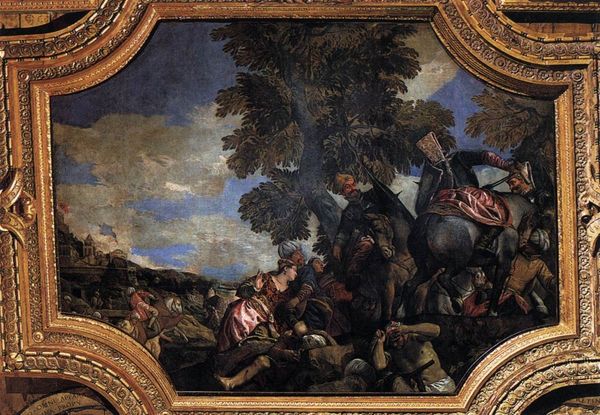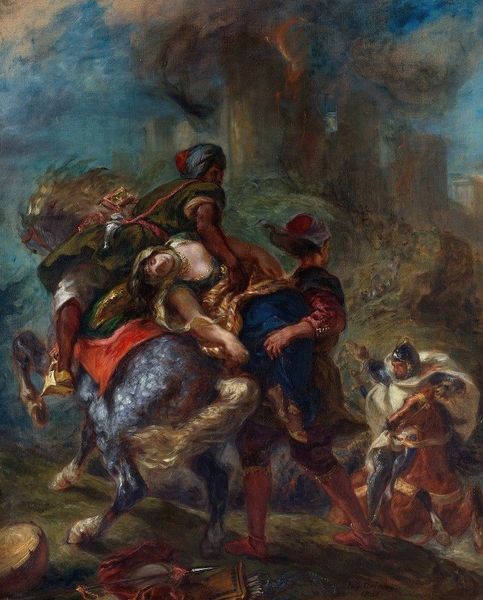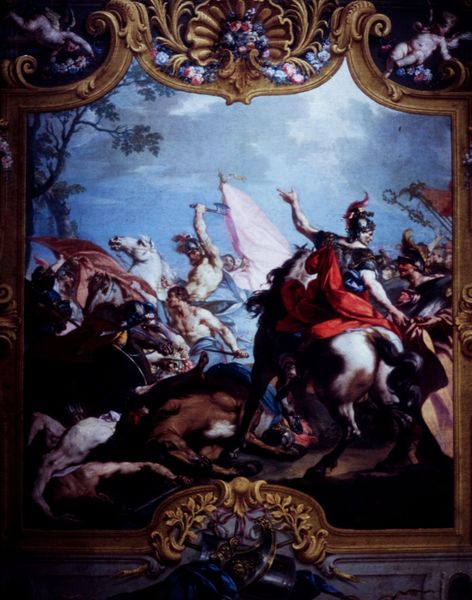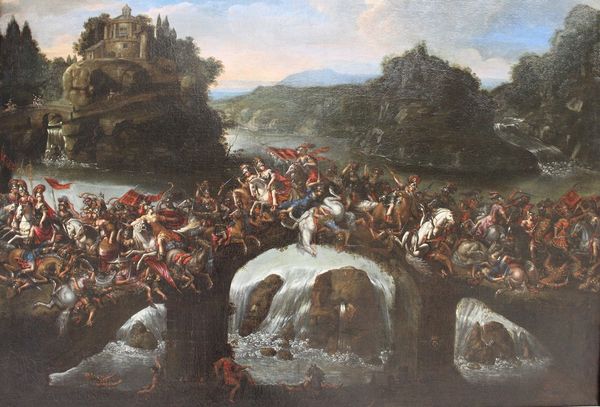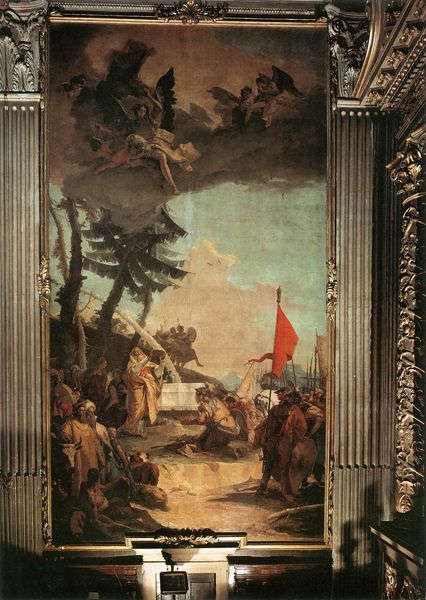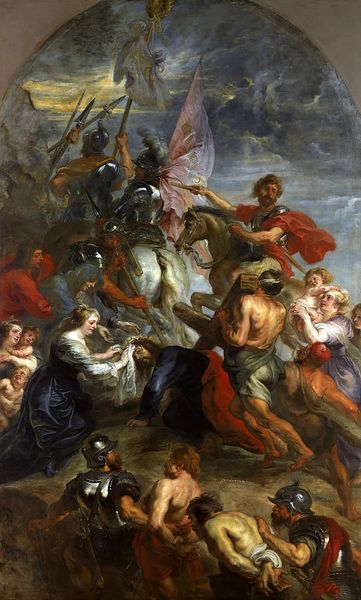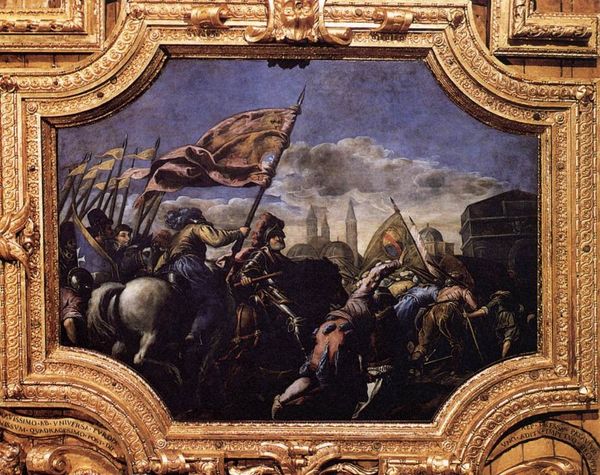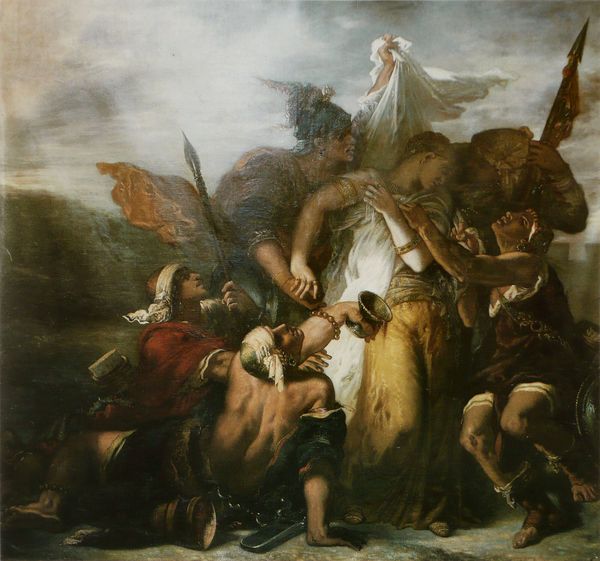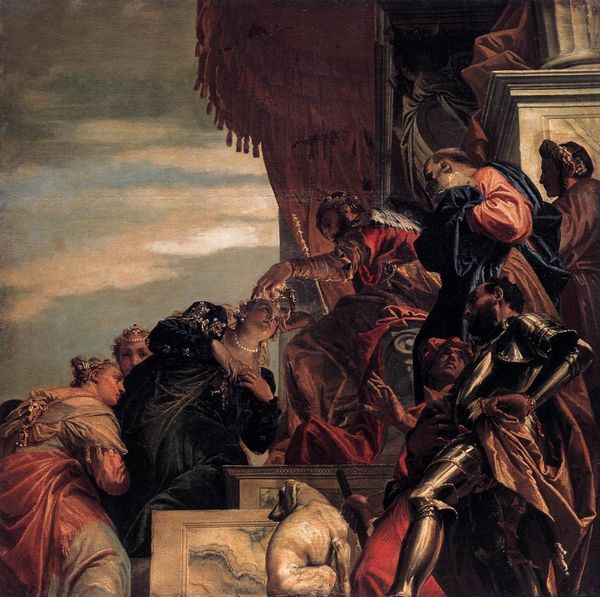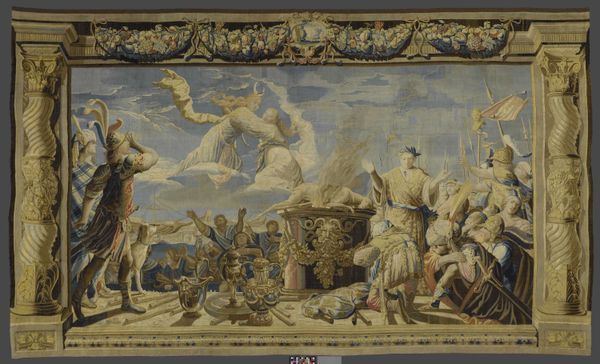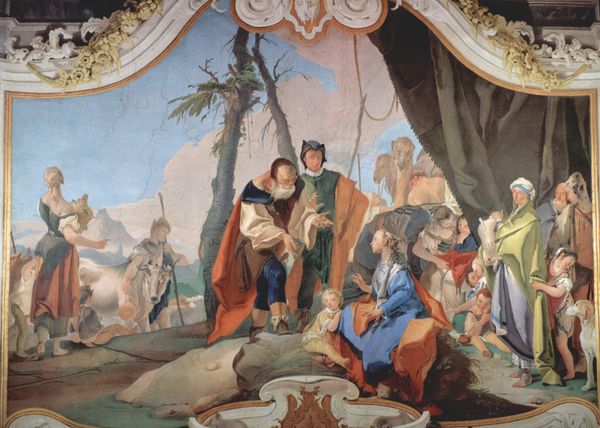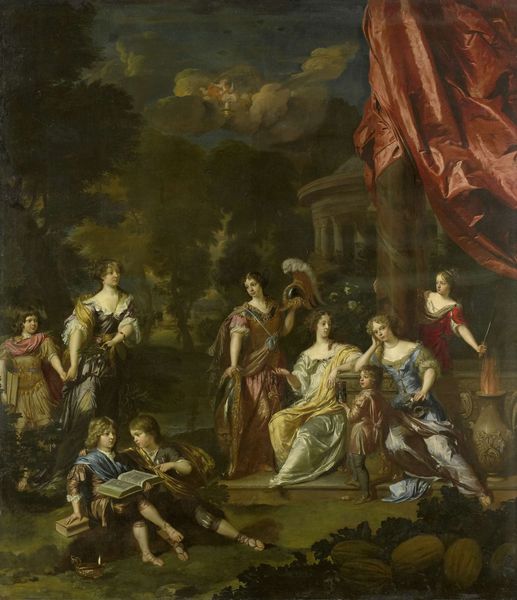
painting, oil-paint, photography
#
venetian-painting
#
narrative-art
#
painting
#
oil-paint
#
war
#
mannerism
#
figuration
#
photography
#
cityscape
#
history-painting
#
academic-art
Copyright: Public domain
Curator: At first glance, this painting evokes a strange mix of grandeur and violence. The swirling clouds and dramatic figures draw the eye, but then the scene's brutality becomes apparent. Editor: Indeed. What you are describing is "The Conquest of Smyrna," an oil painting by Paolo Veronese, dating back to 1585. It offers a glimpse into a pivotal historical event, showcasing Veronese's distinctive Venetian style during the late Renaissance. Curator: The way he depicts the cityscape crumbling under siege reminds me of similar imagery found throughout history, often used to depict divine retribution or a turning point in civilization. It hits on something deep in our cultural memory. Editor: Absolutely, it’s a perfect example of how history painting was used to shape public perception. The fall of Smyrna was a critical moment in Ottoman-Venetian relations, so naturally Veronese highlights Venice’s martial prowess for the ruling families. Curator: It is all cleverly composed. The figures almost spill out of the frame. The dynamism contrasts sharply with the subject’s darker themes, reflecting, perhaps, the internal conflicts present during this volatile era. But tell me, the dominance of martial painting itself-- does this connect back to a desire for a continuity of cultural power? Editor: I think you're right. Beyond Veronese’s virtuosity with color and form, such grand paintings served a clear socio-political role, projecting an image of Venetian power. By immortalizing such events on canvas, they aimed to legitimize existing structures of power and celebrate Venetian dominance in the Eastern Mediterranean. The art reinforces existing power dynamics, and in this piece the visual symbolism suggests dominance, which seems both culturally anchored and consciously amplified. Curator: Ultimately, a piece like this reminds us that art is never created in a vacuum. This artwork exists to reinforce ideals, power and control within culture. Even those themes continue resonating centuries later. Editor: Precisely. It allows us to reflect not only on Venetian history but also on the broader role art plays in shaping narratives and consolidating power structures.
Comments
No comments
Be the first to comment and join the conversation on the ultimate creative platform.
